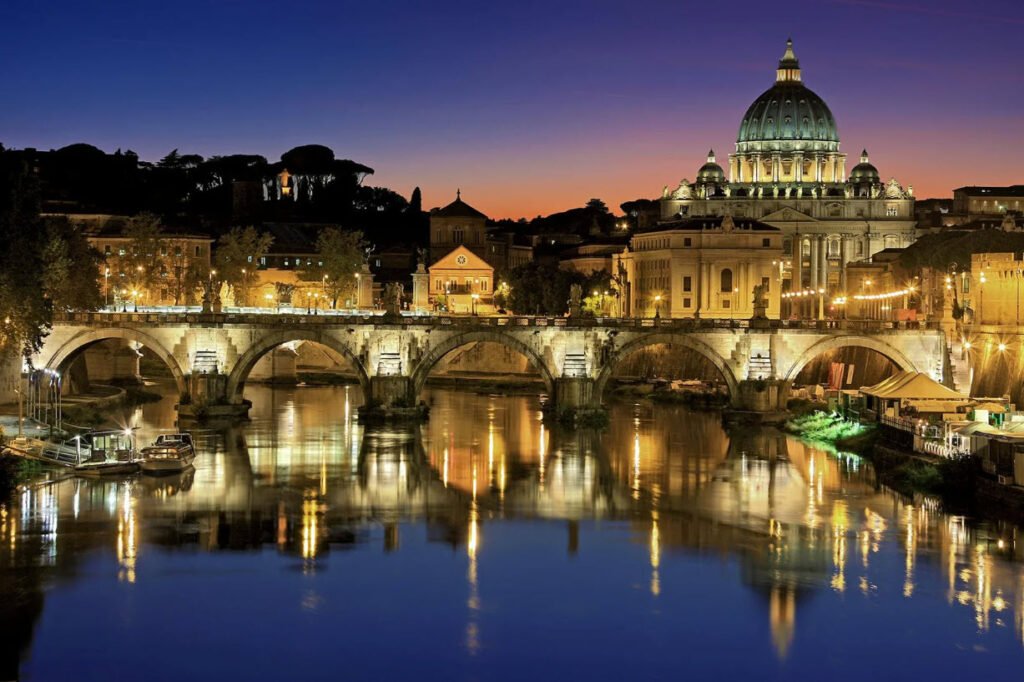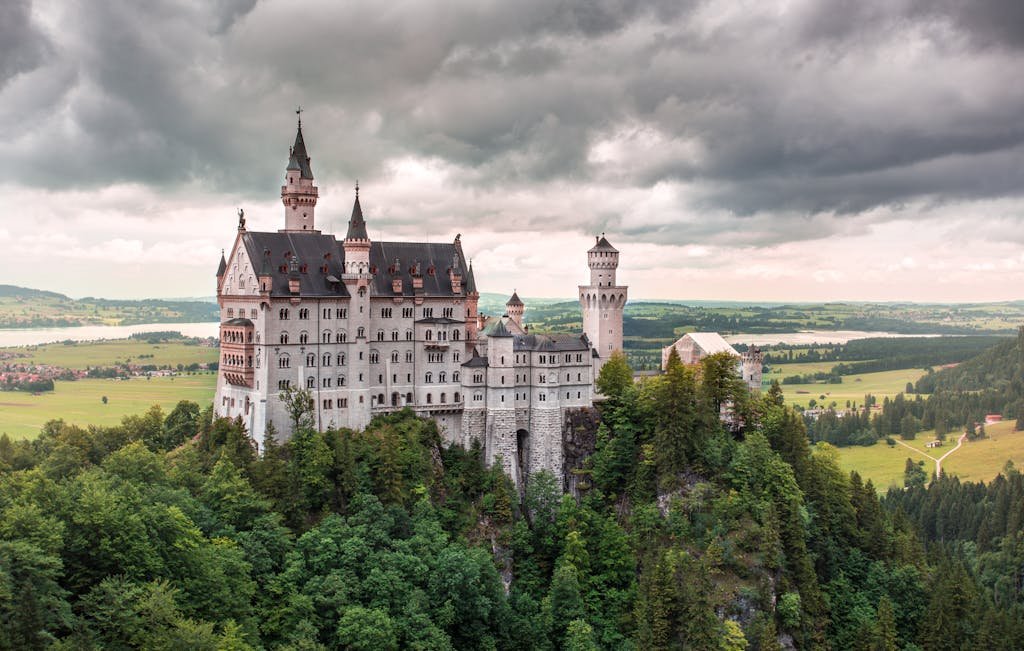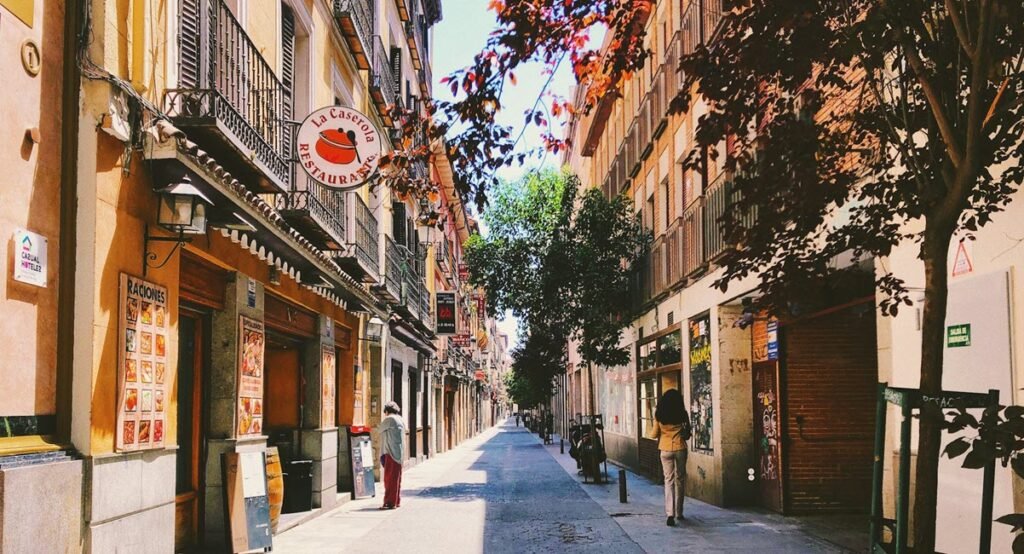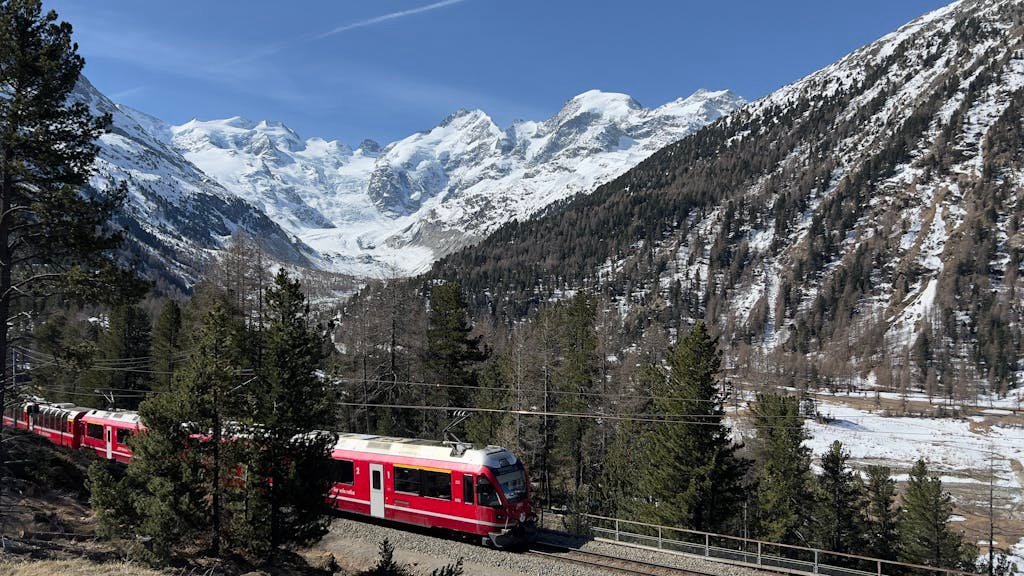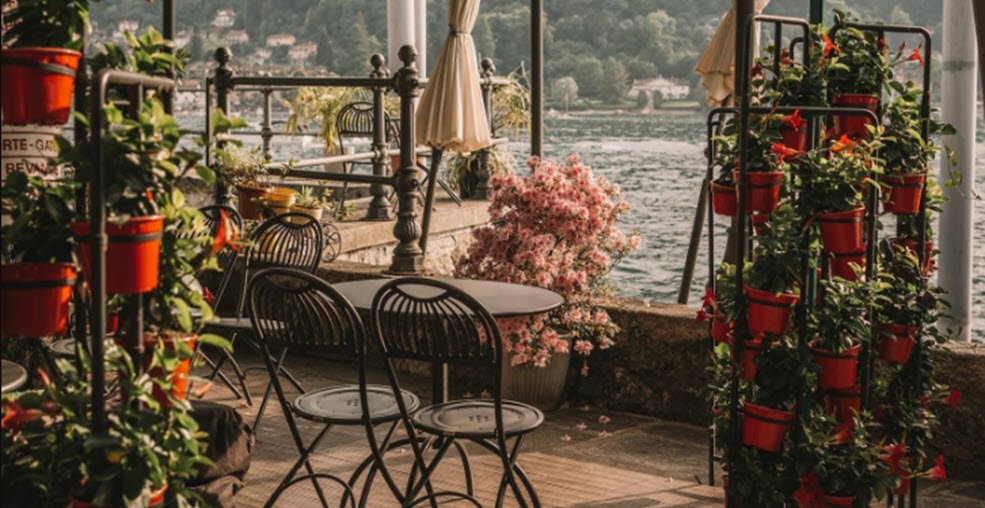Tailored itineraries for travelers who want comfort, culture, and authentic European experiences.
Get Your Free Europe 30 Day Planner Guide
Discover how you can enjoy life to the fullest—enjoy great cities to visit in Europe, luxury rail journeys, and immersive cultural experiences – embrace the life of a slow traveler.
✨ Perfect Itineraries | 💶 Savings on Travel | 🌍 Live Your Dreams
Picture yourself sipping espresso at a Roman sidewalk café, watching the morning light dance across ancient cobblestones. No rushing to catch a tour bus, no frantically checking off attractions from a mile-long list. Just you, a comfortable chair, and the gentle rhythm of Italian life unfolding around you. This is what a proper Italy tour should feel like—especially when you have the luxury of time.
At 55 and beyond, travel takes on a different character. You’ve earned the right to savor experiences rather than collect them. A month-long Italy tour offers something precious: the chance to live temporarily as locals do, to discover neighborhood bakeries, to have genuine conversations with shopkeepers who remember your face after a few days.
This comprehensive 30-day Italy tour itinerary guides you through Italy’s most captivating regions at a pace that honors both your comfort and curiosity. We’ll spend a week each in Rome, Tuscany, and Northern Italy’s lakes or mountains, with a final week for spontaneous discoveries or deeper exploration of your favorite spots.
Why Choose a 30-Day Italy Tour?
Benefits for 55+ Travelers
The beauty of extended Italy tour experiences lies in their ability to transform you from tourist to temporary resident. When you embark on an Italy tour for a month, restaurant owners begin to recognize you. Market vendors save the best tomatoes for their regular customers. You develop preferences—perhaps you discover that Tuesday’s fresh bread at the corner panetteria is superior to Saturday’s, or that the 6 PM church bells in your Roman neighborhood mark the perfect time for aperitivo.
Most importantly, a longer Italy tour eliminates the exhaustion that comes with constant packing and unpacking. Your body adjusts to one time zone, one routine, one set of local customs before moving to the next region. This approach particularly benefits mature travelers who may need more recovery time between activities or prefer a more measured exploration style.
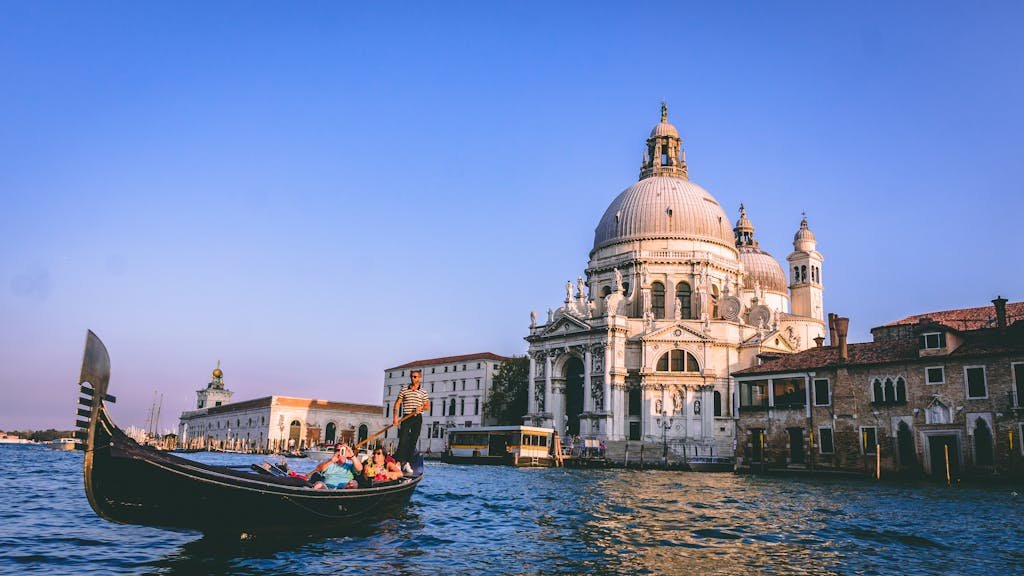
How This Italy Tour Is Different
Unlike rushed Italy tour options, this month-long approach treats each destination as a home base rather than a checkpoint. You’ll book accommodations for full weeks, allowing you to negotiate better rates and settle into routines. Some mornings you’ll wake up and decide to revisit yesterday’s museum because something captured your imagination. Other days, you’ll skip the planned activity entirely in favor of a long lunch and people-watching.
This Italy tour flexibility becomes especially valuable when dealing with the unpredictabilities of travel—a bout of jet lag, unexpectedly rainy weather, or simply the desire to spend more time in a place that speaks to your soul.
Week 1 – Rome: History, Comfort & Culture
Rome rewards the unhurried visitor, making it an ideal starting point for any Italy tour. While day-trippers frantically photograph the Colosseum, you’ll have time to return at sunset when the crowds thin and the ancient stones glow amber in the evening light. You’ll discover that the city’s true treasures often lie in its rhythms—the morning espresso ritual, the afternoon riposo, the evening passeggiata when Romans take to the streets for their traditional stroll.
With a week in Rome during your Italy tour, you can visit the Vatican Museums on a Wednesday afternoon when crowds lighten, rather than fighting weekend throngs.
Where to Stay in Rome for a Week
Choose your Roman neighborhood thoughtfully, as it will become your temporary home. Trastevere offers village-like charm within the eternal city, with narrow medieval streets, family-run trattorias, and enough morning markets to make grocery shopping feel like cultural immersion. The cobblestones can be challenging for mobility issues, but the authentic atmosphere rewards the effort.
For those prioritizing comfort and accessibility, Prati—near the Vatican—provides wider streets, excellent public transport connections, and sophisticated dining without the tourist markup. The neighborhood feels residential yet refined, with plenty of cafés perfect for morning reading sessions.
Campo de’ Fiori strikes a middle ground, offering proximity to major sites while maintaining local character. The morning market fills the famous piazza with color and conversation, and by evening, the same space transforms into Rome’s social hub for both locals and visitors.
Top Attractions Without the Rush
With a week in Rome, you can visit the Vatican Museums on a Wednesday afternoon when crowds lighten, rather than fighting weekend throngs. Book the early morning Colosseum tour, then return to your neighborhood for lunch and a rest before exploring the nearby Roman Forum in late afternoon light.
During this phase of your Italy tour, the Capitoline Museums deserve half a day, not the rushed hour most tour packages allow. Linger with Marcus Aurelius’s statue. Study the intricate details of ancient Roman portraiture. These moments of contemplation—impossible during hurried visits—often become the most memorable aspects of extended travel.
Don’t overlook Rome’s countless churches, each a small museum in its own right. San Clemente offers three levels of history, from current-day basilica down to ancient Mithraic temple. Santa Maria in Trastevere glows with 12th-century mosaics that locals still consider part of their daily landscape.
Day Trips from Rome by Train
Italy’s excellent rail system makes day trips effortless. Ostia Antica, Rome’s ancient port, offers remarkably preserved mosaics and theaters without the crowds of Pompeii. The train journey takes just 45 minutes, and you’ll often find yourself sharing the ruins with more archaeologists than tourists.
Tivoli presents two UNESCO World Heritage sites: Villa Adriana, Hadrian’s sprawling imperial retreat, and Villa d’Este, a Renaissance masterpiece of fountains and gardens. Both require significant walking, so plan accordingly and consider bringing a walking stick if stairs concern you.
For a gentler excursion, the train to Frascati carries you into wine country within an hour of Rome’s city center. The hillside town offers spectacular views across the Roman countryside and family-run osterie where you can sample local Frascati wines alongside simple, perfectly prepared dishes.
Week 2 – Tuscany: Wine, Villages & Slow Life
Tuscany embodies the Italian dream and serves as the perfect second destination for your Italy tour—rolling hills dotted with cypress trees, medieval villages perched on hilltops, and vineyards that have been family-owned for centuries. But Tuscany also requires choices. With endless charming towns and countless wine estates, even a week feels insufficient for most Italy tour participants. The key lies in choosing one or two base towns and exploring outward, rather than constantly moving.
Best Towns to Base Yourself
Siena offers the perfect balance of urban sophistication and manageable size. The car-free historic center encourages walking, while excellent bus connections link you to surrounding hill towns. Stay near the Piazza del Campo—the shell-shaped heart of the city—and you’ll wake each morning to the sight of one of Europe’s most beautiful medieval squares.
The weekly market fills the area around the fortress with local produce, handcrafted goods, and the kind of animated conversations that make excellent people-watching material. Siena’s neighborhood festivals, particularly if you’re lucky enough to visit during Palio season, provide authentic glimpses into community life that most tourists never experience.
Montepulciano appeals to wine enthusiasts and those seeking a quieter base. The Renaissance town perches dramatically atop its hill, with wine cellars literally carved into the rock beneath your feet. Many accommodation options include kitchens, allowing you to shop local markets and prepare simple meals featuring Tuscan specialties.
The town’s main street climbs steadily upward, which might challenge those with mobility concerns, but most attractions cluster near the main piazza. The reward for the climb? Sunset views across the Val d’Orcia that will spoil you for ordinary sunsets forever.
How to Get Around Tuscany (Car vs Train)
This decision shapes your entire Tuscan experience and can make or break this portion of your Italy tour. Italy by train tours offer comfort and eliminate driving stress, but limit you to major towns. The rail network efficiently connects Florence, Siena, and other significant destinations, and regional buses extend your reach to smaller villages.
Renting a car provides freedom to discover hidden vineyards and pause whenever a view demands photography during your Italy tour experience. However, Tuscan roads can be narrow and winding, ZTL (limited traffic zones) in historic centers carry hefty fines, and parking in medieval towns often requires significant walking from car to destination.
Many travelers find a hybrid approach works best: use trains for longer distances and day trips to major towns, then consider hiring a driver for specific wine tours or hard-to-reach villages. Local tourism offices can recommend reliable English-speaking drivers who double as cultural interpreters.
Local Experiences: Cooking, Vineyards & Markets
Tuscany’s culinary traditions run deep, and cooking classes here feel less like tourist activities and more like family gatherings. Many farmhouses offer morning market tours followed by hands-on cooking sessions using your purchases. You’ll learn that proper ribollita requires day-old bread and patience, that hand-rolled pici pasta needs just flour, water, and technique.
Wine experiences range from grand estates with formal tastings to family operations where the owner pours samples directly from barrels while explaining generations of winemaking tradition. Brunello producers in Montalcino often provide more intimate experiences than their Chianti Classico counterparts, simply due to smaller scale production.
Tuesday and Saturday markets transform town centers into social theaters. Arrive early for the best selection, but linger to observe local shopping rituals. Watch how Tuscan cooks select their vegetables—pressing gently, sniffing carefully, engaging in detailed negotiations with vendors they’ve known for decades.
Week 3 – Northern Lakes or Dolomites: Nature & Relaxation
Your third week presents a delightful dilemma for any Italy tour: the romantic lakes of Lombardy or the dramatic peaks of the Dolomites. Both offer respite from art-heavy southern destinations, but each appeals to different travel styles and physical abilities.
Lake Como vs Dolomites – Which to Choose?
Lake Como epitomizes Italian elegance with its villa-studded shoreline, sophisticated towns, and efficient ferry system that transforms transportation into sightseeing. The lake’s Y-shaped configuration offers varied landscapes—from Bellagio’s botanical gardens to Varenna’s medieval charm to Como’s urban sophistication.
Ferry travel eliminates driving concerns while providing constantly changing perspectives of the lake and surrounding mountains. Villa gardens like those at Villa del Balbianello offer gentle walking among centuries-old plantings. The climate remains mild even in shoulder seasons, making lake cruises comfortable throughout much of the year.
The Dolomites appeal to those craving mountain air and dramatic scenery. Despite their imposing appearance, many Dolomite experiences require minimal hiking. Cable cars lift you to mountain restaurants where you can enjoy local specialties while gazing across peaks that glow pink at sunrise and sunset—the famous alpenglow that photographers travel worldwide to capture.
Dolomites in April present snow-capped peaks against emerging spring vegetation, though weather can be unpredictable. The region’s unique cultural blend—Italian warmth with Austrian efficiency—creates an atmosphere unlike anywhere else in Italy.
Relaxed Outdoor Activities for Seniors
Lake Como’s Greenway walk connects Colonno, Sala Comacina, and Griante via a level path through olive groves and lakeside parks. The route takes two to three hours at a leisurely pace, with multiple cafés providing rest stops and spectacular views.
Boat excursions eliminate walking entirely while showcasing the lake’s most famous villas and gardens. Many operators offer commentary in English, providing historical context for the grand homes and their famous residents—from 18th-century nobles to contemporary celebrities.
In the Dolomites, cable cars access high-altitude meadows perfect for gentle walks among wildflowers. The Seiser Alm (Alpe di Siusi) offers Europe’s largest alpine meadow, accessible by cable car from Compatsch. Once aloft, level paths wind through traditional mountain scenery without requiring technical hiking skills.
Mountain railways like the one from Bolzano to Renon provide scenic transportation combined with cultural experiences—hilltop villages, traditional crafts, and mountain restaurants serving South Tyrolean specialties that blend Italian and Austrian influences.
Healthcare, Safety & Local Life in Northern Italy
Northern Italy’s healthcare system ranks among Europe’s finest, with modern hospitals in major cities and smaller clinics serving tourist areas. Lake Como’s towns maintain pharmacies and medical practices accustomed to international visitors, while Dolomite resorts often employ multilingual medical staff familiar with common travel health issues.
The region’s safety levels remain exceptionally high, with main concerns being typical travel precautions—securing valuables, staying aware in crowded areas, and understanding local emergency procedures. Tourist police in major destinations speak multiple languages and specifically assist visitors with problems or questions.
Local life in northern Italy moves more rapidly than in Rome or Tuscany, reflecting the region’s industrial prosperity and international connections. Business hours tend to be more consistent, restaurants may open earlier for dinner, and English proficiency generally runs higher than in southern regions.
Travel Logistics for a Month in Italy
Rail vs Driving: What’s Best for 55+?
When planning your Italy tour transportation, Italy’s rail network excels for intercity travel and connecting major destinations. High-speed trains like Trenitalia’s Frecciarossa and Italo make Rome-to-Florence journeys comfortable and efficient, with first-class seating that includes meal service and dedicated luggage assistance.
For travelers with mobility concerns, trains provide level boarding in major stations, accessible restrooms, and the ability to move around during travel. Reserved seating eliminates uncertainty, and advance booking often reduces costs significantly.
However, local transportation within regions varies considerably. Tuscany’s hill towns may require buses or taxis from rail stations, while Lake Como’s ferry system provides scenic alternatives to driving. Research specific destinations carefully, as some charming villages remain difficult to reach without private transportation.
Regional car rental makes sense for certain areas—particularly Tuscany’s wine country and the Dolomites’ scattered attractions—but consider your comfort level with European driving conventions, narrow roads, and limited traffic zones that can trigger expensive fines.
Packing Tips for Extended Stays
Month-long Italy tour travel requires different packing strategies than short trips. Focus on versatile pieces that mix and match easily, emphasizing comfort and wrinkle-resistant fabrics. Italian style tends toward understated elegance rather than flashy displays, so neutral colors and classic cuts will help you blend with local fashion sensibilities.
Pack one week’s worth of clothing, planning to do laundry regularly rather than bringing everything you might need. Most accommodations provide washing machines or can recommend nearby laundromats. This approach keeps luggage manageable while ensuring fresh clothing throughout your journey.
Bring comfortable walking shoes broken in well before travel, as Italian cities involve considerable walking on uneven surfaces. Pack a lightweight rain jacket regardless of season, as weather can change quickly, particularly in mountainous regions.
Consider a small day pack for excursions, medications in original containers with prescriptions, and copies of important documents stored separately from originals. European pharmacies stock most common medications, but prescriptions may require local doctor consultation.
Travel Insurance & Healthcare Access
Comprehensive travel insurance becomes essential for extended Italy tour experiences, particularly for travelers over 55. Look for policies covering medical emergencies, trip interruption, and emergency evacuation. Some policies provide 24-hour assistance hotlines staffed with multilingual operators familiar with European healthcare systems.
European Health Insurance Cards (EHIC) provide some coverage for EU citizens, but Americans need private insurance. Verify that your policy covers pre-existing conditions and provides adequate medical evacuation coverage, as emergency transport from remote areas can be expensive.
Italy’s healthcare system operates efficiently, with English-speaking staff common in tourist areas and major cities. Emergency numbers (112 for general emergency, 118 for medical emergency) connect you with multilingual operators who can dispatch appropriate assistance.
Budgeting & Accommodation Strategy
Extended-Stay Rentals vs Hotels
Month-long Italy travel opens accommodation options unavailable to shorter trips. Extended-stay rentals often provide better value than hotels, particularly in expensive cities like Rome or popular destinations like Florence. Kitchens allow you to balance restaurant meals with simple home-prepared food, reducing overall costs while providing more authentic shopping experiences at local markets.
Vacation rental platforms offer age-friendly filters for ground-floor apartments, accessible bathrooms, and elevator buildings. Read reviews carefully, paying attention to comments about noise levels, neighborhood character, and proximity to public transportation.
However, hotels provide services that apartments cannot: daily housekeeping, concierge assistance, and immediate problem resolution. Many Italian hotels cater specifically to mature travelers, offering services like luggage assistance, early check-in flexibility, and local area expertise.
Consider a mixed approach: hotels in Rome and Florence where services matter most, apartments in Tuscany and lake areas where you’ll spend more time relaxing and less time touring intensively.
Estimated Costs for 30 Days in Italy
Budget expectations for an Italy tour vary dramatically based on accommodation choices, dining preferences, and activity levels. A comfortable month-long Italy tour for two people typically ranges from $8,000 to $15,000, including flights from major U.S. cities.
Accommodation represents the largest expense category, ranging from $100 per night for nice apartments or mid-range hotels to $300+ for luxury properties in prime locations. Weekly rentals often provide significant savings over nightly rates.
Dining costs depend heavily on choices between tourist-oriented restaurants and local establishments. Lunch at neighborhood trattorias averages $25-35 per person, while dinner at quality restaurants ranges $50-80 per person including wine. Market shopping and occasional home cooking can reduce food costs substantially.
Transportation within Italy remains reasonably priced, with first-class rail tickets between major cities costing $50-100 per person. Local transportation, museum admissions, and activities add $30-50 per person daily.
Tips to Avoid Tourist Traps
Authentic Italian experiences often hide in plain sight, overlooked by visitors focused on famous attractions. Restaurants displaying tourist menus in multiple languages and located directly beside major monuments typically cater to hurried tourists rather than discerning diners.
Instead, seek establishments filled with locals, particularly during lunch hours when Italian workers patronize nearby restaurants. If you don’t speak Italian, look for places where the staff speaks limited English—often a sign that they cater primarily to Italian customers.
Shopping for food at local markets not only saves money but provides cultural immersion impossible in tourist-focused establishments. Ask vendors for advice on selecting products, preparation suggestions, and seasonal recommendations. These conversations often lead to restaurant suggestions and cultural insights unavailable in guidebooks.
Avoid leather goods, jewelry, and artwork sold near major tourist attractions, as quality rarely justifies inflated prices. For authentic purchases, seek recommendations from locals or visit artisan workshops in residential neighborhoods.
Frequently Asked Questions
What is the best 30-day itinerary for Italy? The ideal month-long Italy tour itinerary balances iconic destinations with adequate time for genuine immersion. Spending a week each in Rome, Tuscany, and Northern Italy (lakes or Dolomites) allows deep exploration without constant packing and unpacking, while leaving a final week for spontaneous discoveries or extended time in your favorite region.
Is a month in Italy too long? A month in Italy provides the perfect timeframe for transitioning from tourist to temporary resident during your Italy tour. You’ll develop local routines, build relationships with shopkeepers and restaurant owners, and experience Italy’s seasonal rhythms. Most Italy tour participants find that month-long trips create lasting memories and cultural understanding impossible during shorter visits.
How can seniors travel around Italy safely? Italy ranks among the world’s safest travel destinations for mature travelers embarking on an Italy tour. Stick to well-lit areas at night, secure valuables, and maintain awareness in crowded tourist zones. Italy’s excellent healthcare system and widespread English proficiency in tourist areas provide additional security for international visitors.
Should I rent a car in Tuscany? Car rental in Tuscany depends on your priorities and comfort level during your Italy tour. Cars provide freedom to explore wine country and hilltop villages at your own pace, but require navigating narrow roads, limited traffic zones, and parking challenges in medieval town centers. Many Italy tour travelers find a combination of trains for major destinations and hired drivers for specific wine tours provides the best balance of convenience and access.
What are the best cities in Italy for slow travel? Rome, Siena, and Lake Como excel for Italy tour slow travel experiences. Rome offers endless layers of history within walkable neighborhoods, Siena provides authentic Tuscan culture in a manageable setting, and Lake Como combines natural beauty with sophisticated amenities. Each destination rewards extended stays with gradually revealed local secrets and authentic cultural interactions.
Your Month in Italy Awaits
This 30-day Italy tour offers something precious in our hurried world: permission to slow down, to savor, to truly inhabit the places you visit rather than simply collecting them. You’ll return home with more than photographs and souvenirs—you’ll carry memories of morning conversations with Roman baristas, sunset aperitivos overlooking Tuscan vineyards, and the profound satisfaction that comes from traveling at your own pace.
The beauty of extended Italy tour travel reveals itself gradually, like a fine Italian wine that improves with time and attention. Your month-long Italy tour won’t just be a trip—it will be a homecoming to a slower, more intentional way of experiencing the world.
Start planning your Italian adventure today. Download our comprehensive Extended Italy Travel Starter Kit, complete with packing checklists, booking timelines, and week-by-week planning templates designed specifically for mature travelers seeking authentic, unhurried experiences.
External Links to Authoritative Sites:
- Trenitalia Official Website – Italy’s primary rail service for booking train travel
- Italy Tourism Board – Official destination information and travel resources
- U.S. State Department Travel Advisory – Italy – Current safety and travel information
- European Centre for Disease Prevention and Control – Health and safety guidelines for European travel
- Rick Steves Italy Guide – Comprehensive cultural and practical travel information
Become inspired
Join today and receive stories, images and comments that will truely inspire you.

